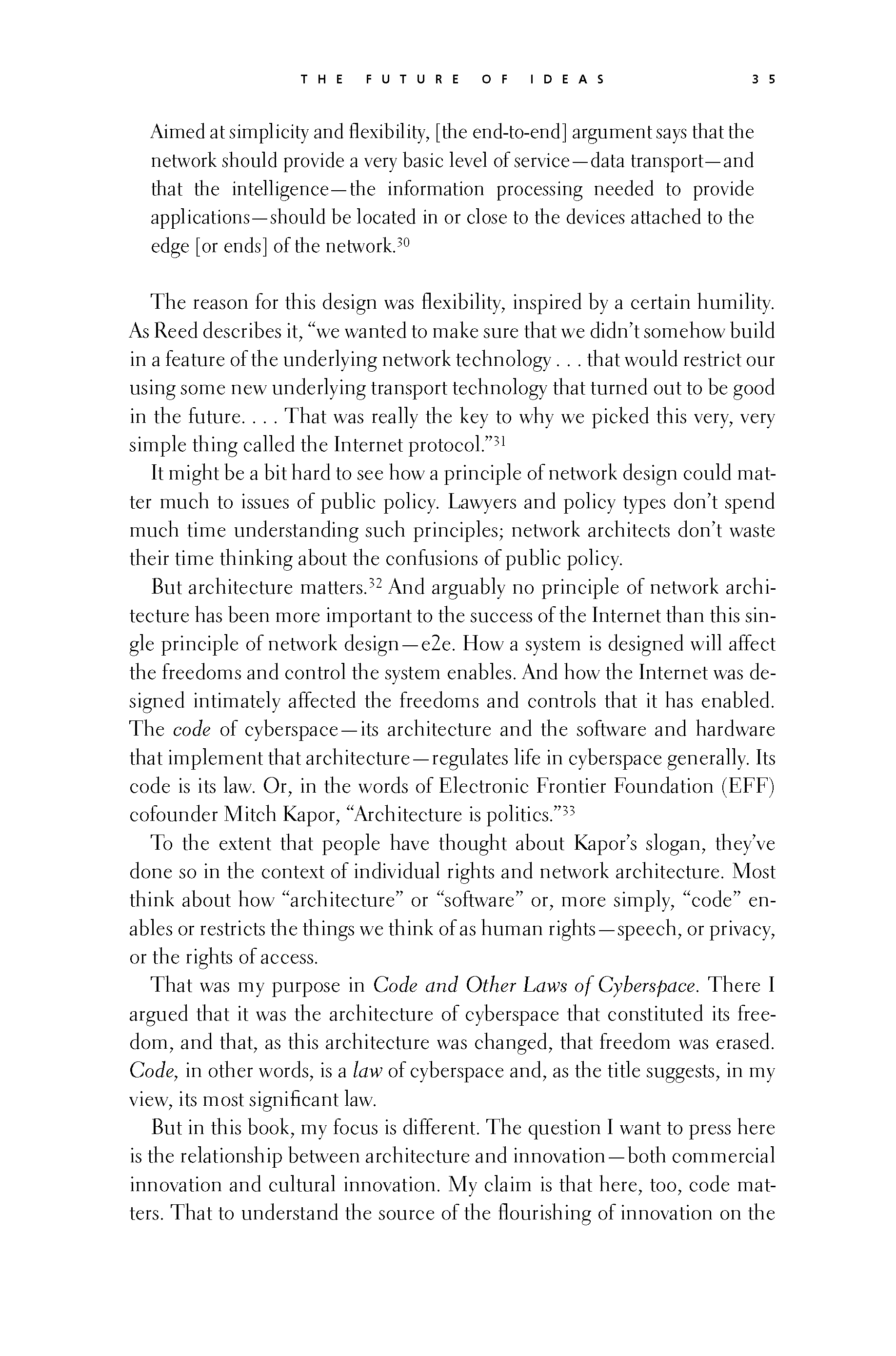 p034 _
-chap- _
toc-1 _
p035w _
toc-2 _
+chap+ _
p036
p034 _
-chap- _
toc-1 _
p035w _
toc-2 _
+chap+ _
p036
____ Aimed at simplicity and flexibility, [the end-to-end] argument says that the
____ network should provide a very basic level of service -- data transport -- and
____ that the intelligence -- the information processing needed to provide
____ applications -- should be located in or close to the devices attached to the
____ edge [or ends] of the network.[3-30]
The reason for this design was flexibility, inspired by a certain humility.
As Reed describes it, "we wanted to make sure that we didn't somehow build
in a feature of the underlying network technology... that would restrict our
using some new underlying transport technology that turned out to be good
in the future... That was really the key to why we picked this very, very
simple thing called the Internet protocol."[3-31]
It might be a bit hard to see how a principle of network design could mat-
ter much to issues of public policy. Lawyers and policy types don't spend
much time understanding such principles; network architects don't waste
their time thinking about the confusions of public policy.
But architecture matters.[3-32] And arguably no principle of network archi-
tecture has been more important to the success of the Internet than this sin-
gle principle of network design -- e2e. How a system is designed will affect
the freedoms and control the system enables. And how the Internet was de-
signed intimately affected the freedoms and controls that it has enabled.
The _code_ of cyberspace -- its architecture and the software and hardware
that implement that architecture -- regulates life in cyberspace generally. Its
code is its law. Or, in the words of Electronic Frontier Foundation (EFF)
cofounder Mitch Kapor, "Architecture is politics."[3-33]
To the extent that people have thought about Kapor's slogan, they've
done so in the context of individual rights and network architecture. Most
think about how "architecture" or "software" or, more simply, "code" en-
ables or restricts the things we think of as human rights -- speech, or privacy,
or the rights of access.
That was my purpose in _Code_and_Other_Laws_of_Cyberspace._ There I
argued that it was the architecture of cyberspace that constituted its free-
dom, and that, as this architecture was changed, that freedom was erased.
_Code,_ in other words, is a _law_ of cyberspace and, as the title suggests, in my
view, its most significant law.
But in this book, my focus is different. The question I want to press here
is the relationship between architecture and innovation -- both commercial
innovation and cultural innovation. My claim is that here, too, code mat-
ters. That to understand the source of the flourishing of innovation on the
[[35]]
p034 _
-chap- _
toc-1 _
p035w _
toc-2 _
+chap+ _
p036